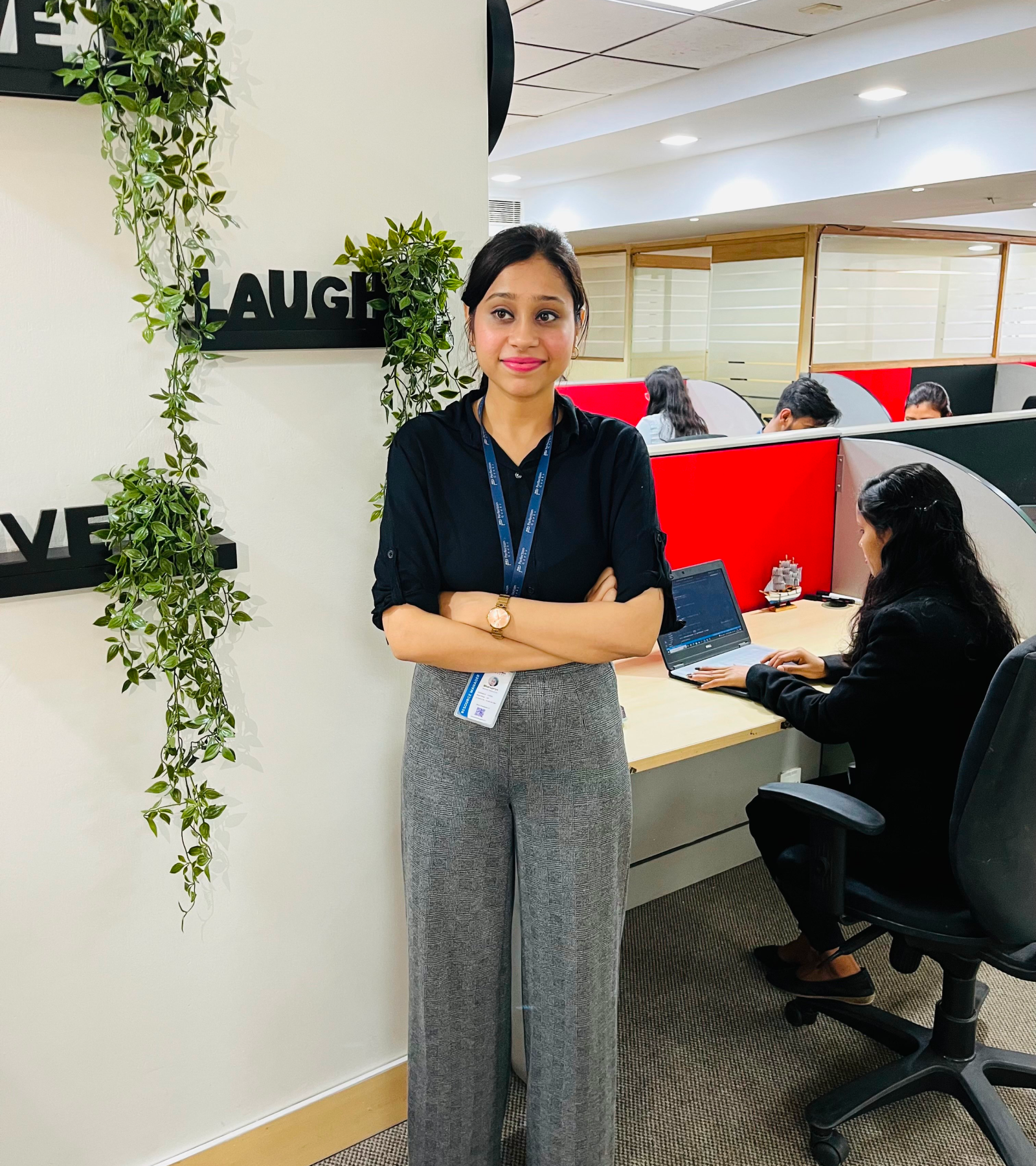An Introductory Guide to Fine-Tuning LLMs

AUG, 9, 2024 17:20 PM
An Introductory Guide to Fine-Tuning LLMs
Large Language Models (LLMs) like GPT-4, BERT, and T5 have become central to many advanced natural language processing (NLP) applications. These models, trained on massive datasets, exhibit impressive capabilities in understanding and generating human language. However, to achieve optimal performance for specific tasks or domains, fine-tuning these models on domain-specific data is crucial. This guide will introduce the concept of fine-tuning LLMs, explore methods and examples, and provide practical advice on how to fine-tune LLMs on your own data.
Why Fine-Tune LLMs
1. Task-Specific Performance
Understanding the Need for Task-Specific Performance
Pre-trained LLMs are trained on vast and diverse datasets, which imbues them with a broad understanding of language. While this broad training is advantageous for general language understanding, it may not be sufficient for highly specialized tasks. The general nature of these models can lead to suboptimal performance when faced with specific jargon, technical language, or domain-specific nuances.
Challenges with General-Purpose Models
1.Domain-Specific Jargon: General-purpose models often lack the detailed understanding required to accurately interpret domain-specific terminology. For instance, a model trained primarily on news articles and social media might struggle with legal documents filled with legalese or medical texts laden with technical terms.
Contextual Nuances: Specialized tasks often require understanding of context that extends beyond general language patterns. For example, a model working in a legal setting must understand legal precedents and specific case details, which a generic model might not grasp effectively.
Fine-Tuning for Enhanced Task-Specific Performance
Fine-tuning adjusts a model's weights using a smaller, task-specific dataset, allowing the model to learn the intricacies of the target domain. This specialized training helps the model adapt to the unique requirements of the task, improving its ability to understand and generate text relevant to that domain.
Example: Legal Document Analysis
Consider a legal document analysis tool. A general-purpose LLM might struggle to accurately categorize or extract information from legal documents due to unfamiliarity with legal terminology and formatting. By fine-tuning the model on a dataset of legal texts, including case law, statutes, and legal commentary, the model becomes proficient in understanding legal language and can better support tasks like document classification, legal research, and case summarization.
2. Improved Accuracy
The Role of Fine-Tuning in Enhancing Accuracy
Fine-tuning enhances a model’s accuracy by enabling it to focus on the specific patterns and nuances of a particular dataset or task. Pre-trained models, while powerful, may not always deliver optimal results in specialized scenarios without this focused training.
Mechanisms of Accuracy Improvement
1.Learning Specific Patterns: During fine-tuning, the model learns to identify and respond to specific patterns within the dataset. For example, a model fine-tuned for sentiment analysis on product reviews will better understand sentiment-related language and subtleties than a general model trained on a broader dataset.
2. Reducing Error Rates: Fine-tuning allows the model to minimize errors related to the target task. For instance, a chatbot fine-tuned with customer service transcripts will learn to handle customer queries more accurately, reducing the rate of incorrect or irrelevant responses.
Example: Medical Text Classification
In the field of medical text classification, fine-tuning a model on medical literature and clinical notes can dramatically improve its accuracy. For example, a general-purpose model might misinterpret medical abbreviations or jargon. Fine-tuning with a dataset of medical texts enables the model to learn these specific terms and their meanings, leading to more accurate classifications of medical conditions or treatment recommendations.
3. Customization
The Importance of Customization in Model Applications
Customization is one of the most significant benefits of fine-tuning LLMs. It allows the model to be tailored to meet the unique needs and requirements of specific applications, enhancing its utility and effectiveness.
Benefits of Customization
1. Alignment with Application Needs: Fine-tuning helps align the model with the specific objectives of an application. Whether it’s a customer service chatbot, a recommendation system, or a content generation tool, fine-tuning ensures that the model's outputs are relevant and useful for the intended purpose.
2. Handling Specialized Inputs: Different applications require different handling of inputs. For instance, a content generation model fine-tuned for creative writing will produce different outputs compared to one fine-tuned for technical documentation. This customization allows the model to generate content that adheres to the desired style and format.
3. Improving User Experience: Customizing the model to better fit the application enhances the overall user experience. For example, a recommendation system fine-tuned to understand user preferences and behavior will provide more accurate and relevant recommendations, leading to increased user satisfaction and engagement.
Example: Customer Service Chatbots
In the context of customer service, fine-tuning a model with transcripts of customer interactions enables it to handle specific customer queries effectively. A general-purpose model might provide generic responses, while a fine-tuned model will deliver more contextually appropriate answers, handle nuances of customer complaints, and engage in more natural conversations.
Example: Content Generation for Marketing
For marketing applications, fine-tuning an LLM on marketing content such as product descriptions, ad copy, and promotional material ensures that the generated content aligns with brand voice and messaging. This customization allows marketers to maintain consistency and relevance in their content, driving better engagement and conversion rates.
Key LLM Fine-Tuning Methods: An In-Depth Exploration

1. Supervised Fine-Tuning
Overview
Supervised fine-tuning is one of the most common methods used to adapt LLMs for specific tasks. It involves training the model on a labeled dataset that includes input-output pairs relevant to the target task. The model learns to predict the correct output given a specific input, guided by the labeled examples provided.
Process
1.Data Preparation: Begin by collecting and preparing a dataset with labeled examples. For instance, if the task is sentiment analysis, the dataset would include text samples annotated with sentiment labels (e.g., positive, negative, neutral).
2.Training Setup: Configure the training process by defining hyperparameters such as learning rate, batch size, and number of epochs. The model’s weights are adjusted based on the labeled examples to minimize the error between the model’s predictions and the actual labels.
3.Evaluation: Assess the model’s performance using a separate validation set to ensure it generalizes well to unseen data. Fine-tune further if necessary based on evaluation metrics such as accuracy, F1 score, or precision-recall.
Example: Sentiment Analysis
For sentiment analysis, a pre-trained LLM like BERT can be fine-tuned on a dataset of product reviews where each review is labeled with sentiment. The model learns to associate specific patterns and words with sentiment categories, improving its ability to predict sentiment in new, unseen reviews.
Advantages
●Direct Adaptation: Provides a straightforward approach to adapting models to specific tasks with clear and well-defined outputs.
● High Accuracy: Can achieve high accuracy if sufficient labeled data is available.
Challenges
●Data Dependency: Requires a substantial amount of labeled data, which can be expensive and time-consuming to obtain.
● Overfitting Risk: There is a risk of overfitting to the labeled dataset, particularly if the dataset is small.
2. Few-Shot Fine-Tuning
Overview
Few-shot fine-tuning is designed for scenarios where labeled data is limited. Instead of training on a large dataset, the model is exposed to a few examples from the target domain. This method leverages the model’s pre-existing knowledge to generalize from the limited examples provided.
Process
1. Example Collection: Gather a small number of high-quality examples from the target domain. These examples should be representative of the task and include input-output pairs that guide the model’s learning.
2. Fine-Tuning: Train the model on the few examples, adjusting the learning process to make the most out of the limited data. Techniques such as meta-learning or prompt-based learning can be employed to improve generalization from few examples.
3. Evaluation: Test the model’s performance on a validation set to ensure it can generalize from the few examples. Fine-tuning may need to be repeated or adjusted based on performance metrics.
Example: Legal Document Classification
In a scenario where only a few legal documents are available for training, few-shot fine-tuning can be used to adapt a general-purpose LLM to classify legal documents into categories like contracts, case law, or legal briefs. The model learns from these few examples and applies this knowledge to classify new documents.
Advantages
●Efficiency: Reduces the need for large amounts of labeled data, making it suitable for tasks with limited data availability.
● Flexibility: Allows adaptation to new tasks or domains with minimal data.
Challenges
● Limited Learning: The model may struggle to learn effectively from very few examples, potentially affecting performance.
●Generalization: The ability to generalize from few examples may be limited, especially for complex tasks.
3. Transfer Learning
Overview
Transfer learning involves applying knowledge gained from one domain or task to another related domain or task. The model is first fine-tuned on a related task before being adapted to the target task. This approach leverages the similarities between tasks to improve performance.
Process
1. Initial Fine-Tuning: Start by fine-tuning the model on a task that is related to the target task. For example, a model trained on general text classification can be fine-tuned on topic classification before moving to sentiment analysis.
2.Adaptation to Target Task: After the initial fine-tuning, further adapt the model to the specific requirements of the target task. This involves additional fine-tuning on the target task’s dataset.
3.Evaluation: Assess the model’s performance on the target task and adjust fine-tuning as needed based on evaluation results.
Example: From News Classification to Financial Sentiment Analysis
A model pre-trained and fine-tuned on news classification can be adapted for financial sentiment analysis. The model initial training on news content provides a broad understanding of text, which is then refined with financial news to enhance its ability to analyze sentiment in financial contexts.
Advantages
●Efficiency: Reduces the amount of data and training required for the target task by leveraging pre-existing knowledge.
● Improved Performance: Can lead to better performance on the target task by building on related task knowledge.
Challenges
● Domain Similarity: The effectiveness of transfer learning depends on the similarity between the source and target tasks. If the tasks are too dissimilar, performance gains may be limited.
● Complexity: Managing and tuning multiple stages of fine-tuning can be complex.
4. Domain Adaptation
Overview
Domain adaptation is a technique used to fine-tune a model for a specific domain that differs from the domain of the pre-training data. This approach is particularly useful when dealing with specialized terminology or content that the general model was not exposed to during its initial training.
Process
1.Domain-Specific Data Collection: Collect a dataset that represents the domain of interest. This data should be tailored to include the specific language, terminology, and content relevant to the target domain.
2.Fine-Tuning: Adapt the model to the domain-specific data. This often involves modifying the model’s architecture or training process to better handle domain-specific characteristics.
3. Evaluation and Adjustment: Evaluate the model’s performance in the new domain and make adjustments as necessary to optimize its performance.
Example: Adapting for Medical Text
A model pre-trained on general texts can be adapted to handle medical texts by fine-tuning it on a dataset of clinical notes and medical literature. This adaptation helps the model understand medical terminology and context, making it suitable for tasks like medical text classification or information extraction.
Advantages
●Specialization: Tailors the model to handle domain-specific content and terminology effectively.
● Enhanced Relevance: Improves the model’s ability to perform tasks that require specialized knowledge.
Challenges
●Data Availability: Requires high-quality domain-specific data, which may be challenging to obtain.
● Overfitting Risk: There is a risk of overfitting to the domain-specific data, which can affect performance on general tasks.
5. Continual Learning
Overview
Continual learning, also known as incremental learning, involves continuously updating the model as new data becomes available. This method helps the model stay current with evolving trends, information, and changes in the target domain.
Process
1. Incremental Updates: Regularly update the model with new data, incorporating it into the training process. This allows the model to learn from recent examples and adapt to changes.
2. Managing Data Flow: Implement strategies to manage and balance the incoming data, ensuring that updates do not overwhelm the model or lead to catastrophic forgetting of previously learned information.
3. Evaluation and Maintenance: Continuously evaluate the model’s performance and make necessary adjustments to maintain accuracy and relevance over time.
Example: Evolving News Topics
For a news aggregation model, continual learning enables the model to stay updated with current events and emerging news topics. By incorporating new articles and trends regularly, the model remains relevant and accurate in its news summarization and categorization tasks.
Advantages
● Adaptability: Keeps the model current with evolving data and trends.
● Long-Term Performance: Helps maintain the model’s effectiveness over time.
Challenges
● Data Management: Requires careful management of data updates to prevent issues like catastrophic forgetting or performance degradation.
● Computational Overhead: Continual updates can be computationally intensive, requiring efficient training and data handling strategies.
LLM Fine-Tuning Example
To illustrate the fine-tuning process, consider an example where we want to fine-tune a pre-trained LLM for sentiment analysis in customer reviews.
- Select a Pre-Trained Model: Begin with a pre-trained LLM, such as GPT-4 or BERT. These models have been trained on diverse data and possess a b understanding of language.
- Prepare the Dataset: Collect a dataset of customer reviews with labeled sentiments (positive, negative, neutral). The dataset should be representative of the kind of text the model will encounter in real-world applications.
- Preprocess the Data: Clean and preprocess the dataset to ensure it is in a format suitable for model training. This may involve tokenizing the text, removing irrelevant information, and splitting the data into training and validation sets.
- Configure Training Parameters: Set up the fine-tuning parameters, such as learning rate, batch size, and number of epochs. These parameters control how the model updates its weights during training.
- Fine-Tune the Model: Train the model on the prepared dataset. During this phase, the model adjusts its weights to better classify sentiments based on the examples provided.
- Evaluate and Test: After fine-tuning, evaluate the model's performance on a test set to ensure it generalizes well to unseen data. Fine-tune the model further if necessary based on evaluation results.
- Deploy and Monitor: Once the model achieves satisfactory performance, deploy it in a production environment. Monitor its performance and update it as needed to maintain accuracy and relevance.
Fine-Tuning LLMs on Your Own Data
Fine-tuning an LLM on your own data involves several practical steps and considerations:
- Define Objectives: Clearly define the objectives of fine-tuning. What specific tasks or applications do you want the model to excel in? Understanding the goals will guide the data collection and training process.
- Collect and Prepare Data: Gather a dataset that aligns with the objectives. The quality and quantity of data are crucial. Ensure the data is clean, relevant, and representative of the tasks you are targeting.
- Choose the Right Model: Select a pre-trained model that best fits your requirements. Different models have different strengths, so choose one that aligns with your application's needs.
- Set Up the Training Environment: Prepare the computational resources for training. Fine-tuning large models requires significant processing power and memory, so use GPUs or cloud-based solutions as needed.
- Monitor and Iterate: Continuously monitor the model's performance during fine-tuning. Make adjustments to hyperparameters and training strategies based on performance metrics.
- Validate and Test: Use a separate validation set to tune hyperparameters and prevent overfitting. Test the model on unseen data to ensure it generalizes well.
- Deploy and Maintain: Once the model is fine-tuned, deploy it in your application. Regularly update and maintain the model to keep it effective and relevant.
Challenges and Considerations
Fine-tuning LLMs comes with its own set of challenges:
- Data Quality: The success of fine-tuning heavily depends on the quality of the data. Inaccurate or biased data can lead to poor model performance and undesirable outcomes.
- Computational Resources: Fine-tuning large models requires significant computational resources, which can be costly. Optimizing resource usage and exploring cloud-based solutions can help manage these costs.
- Overfitting: There's a risk of overfitting the model to the fine-tuning data, which can reduce its ability to generalize to new data. Regular validation and appropriate regularization techniques can mitigate this risk.
- Ethical Considerations: When fine-tuning on specific data, be mindful of ethical considerations, including data privacy and model bias. Ensure the data used is ethically sourced and the model's outputs are fair and unbiased.
- Model Size and Complexity: Larger models offer better performance but also come with increased complexity and longer training times. Balancing model size with performance requirements is crucial.
Conclusion
Fine-tuningLLMs is a powerful technique for adapting large pre-trained models to specific tasks and domains. By leveraging various fine-tuning methods and addressing practical considerations, you can significantly enhance the performance and relevance of LLMs for your applications. Whether you're working on sentiment analysis, domain adaptation, or any other specialized task, fine-tuning allows you to harness the full potential of LLMs and achieve superior results.
Strategy
Design
Blockchain Solution
Development
Contact US!
USA 
1968 S. Coast Hwy, Laguna Beach, CA 92651, United States
Copyright © 2025 PerfectionGeeks Technologies | All Rights Reserved | Policy







